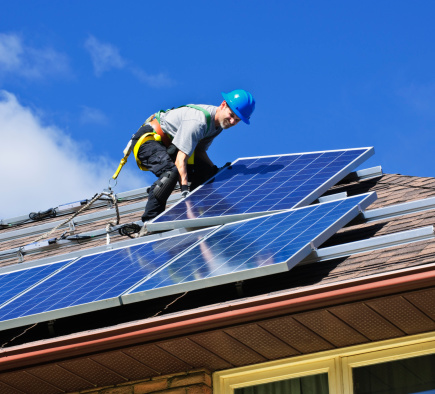How Solar Panel Installation Works

Getting your solar panels installed is a major investment, but it’s also an exciting one. It can save you money on your utility bills and help you contribute to a more sustainable future. You can also enjoy many tax breaks and other benefits from having a solar system on your property.
Choosing the right solar company for you is an important step in the process of installing your system. This is because you want to find an experienced, knowledgeable company with a reputation for providing high-quality service. In addition, you’ll need to get quotes from several companies to compare them and determine which one is best for your needs.
Once you’ve chosen the company, it’s time to work with them to finalize plans. This includes figuring out where the panels will be located and how they will tie into your home’s electrical system. It’s also possible that your roof or electrical panel will need to be replaced in order for the system to be safe and effective.
Next, your Solar contractor will submit the required paperwork to the local government for a building permit. This can take a few weeks to complete, but it’s usually much faster than you might think.
When the permits are approved, your installer will begin ordering all of the supplies they’ll need to complete the installation. This will include the panels, the inverter, and the racking system.
Once your Solar contractor receives these supplies, they’ll schedule a time for the installation to be done. It’s typical for this step to take one to three days, though it can vary depending on the size of your roof and the complexity of the job.
During the installation, your contractor will turn off your electricity so they can work on it. They’ll install wiring that connects the panels to your home and the inverter, as well as a meter for tracking how much energy is produced by your system.
The inverter converts the energy from your solar panels into electricity that can be used to power your home. It can also be connected to a battery bank, which stores extra power for use later.
If your system has a battery, the inverter will also be connected to your electrical grid so you can continue drawing electricity even when your solar panels aren’t producing any. This is called “net metering.” If you’re on a net metering plan, you’ll receive credits for the excess energy your system produces and sends back to the grid.
After your solar panels are installed, your utility company will need to inspect them. This inspection is necessary to make sure the installation complies with local codes and guidelines. This can take a few weeks or months, depending on your utility company’s processes.
Once the inspection is complete, your utility provider will issue a permit to operate (PTO). This is just another way for them to ensure your solar system meets safety and efficiency standards.
The PTO is an important step in your solar installation because it ensures that you’ll be able to use all the energy that your system produces. It also allows you to keep track of the energy that your solar system generates, which is a great way to see how your home’s electricity is being used and to make changes to reduce your consumption if needed. Check out this website at https://www.britannica.com/science/solar-energy for more info about solar.
